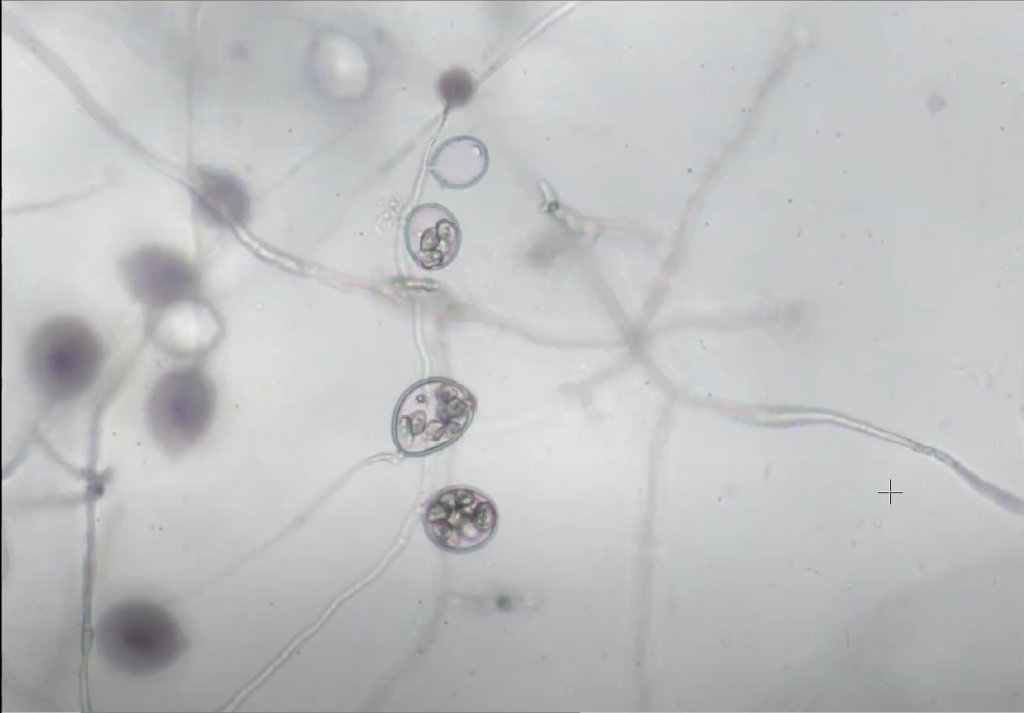New Zealand influential in the global Phytophthora research space
The 10th meeting of the International Union of Forest Research Organizations (IUFRO) – Phytophthora Working Party was held in June this year at the University of California, Berkeley. Meetings like these are a good reminder of the damage caused by species in the Phytophthora genus and of New Zealand’s role in the global effort being made to combat Phytophthora-caused diseases.

The genus Phytophthora (whose name means “plant-destroyer”) is an oomycete, otherwise known as water mould. Over 150 species of Phytophthora have been described globally, and many of these species are responsible for widespread damage to agriculture, forestry, and natural ecosystems worldwide.
Two particularly infamous Phytophthora species are P. infestans and P. cinnamomi. Phytophthora infestans causes potato blight. It was the culprit behind the Irish Potato Famine in the 1840s and remains a destructive pathogen to this day. Phytophthora cinnamomi causes cinnamon root rot and is capable of infecting thousands of species, ranging from mosses and ferns to grasses and trees such as white pine, American chestnut and eucalypts. Since Phytophthora species are generally quite host-specific, Phytophthora cinnamomi poses a unique threat.
In Aotearoa, the Phytophthora of most concern is Phytophthora agathidicida, the pathogen responsible for kauri dieback. Symptoms of kauri dieback include root rot; a collar rot lesion that causes resin production; defoliation of the canopy; and crown decline.
Infection can rapidly kill trees of all ages, including seedlings. Kauri dieback is a devastating disease on both an ecosystem level (kauri are a keystone species) and a cultural level. Millions of dollars and countless hours of effort have been invested into saving these trees from this disease.
Fortunately, there is a rich body of knowledge being built about Phytophthora globally. This knowledge was showcased at the 10th meeting of the IUFRO Phytophthora Working Group. Over 60 people were in attendance (with an additional 10 virtual participants) representing 17 countries.
The meeting included dozens of in-person and virtual talks as well as field trips to view Phytophthora-caused sudden oak death and other forest dieback just outside of San Francisco. The meeting highlighted the importance of pathogen ecology and impacts of Phytophthora disease in the context of climate change, wildfire, and other stressors.
Aotearoa was represented by scientists from Plant & Food Research (Nari Williams, Matthew Arnet, Ian Horner and Shannon Hunter), the University of Auckland (Tracey Godfery), and MPI (Lauren Waller). They presented on Phytophthora agathidicida and also Phytophthora cinnamomi in New Zealand avocado orchards. Nari Williams (co-lead for Host, Pathogen & Environment and member of the meeting’s Scientific Committee) chaired two sessions on the management of Phytophthora in forests.
The 11th meeting is scheduled to take place in New Zealand in September 2024. The opportunity to host this international meeting shows how New Zealand’s Phytophthora researchers continue to influence and be influenced by the knowledge base being built by peers in the field.
Jenny Leonard
December 2022